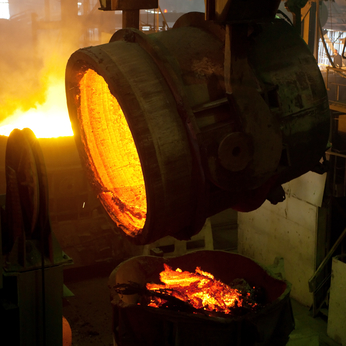One of the major concerns within the automotive industry is to improve fuel efficiency in all the vehicles that we produce. To do this requires that we reduce the weight of the vehicle and improve aerodynamics while still maintaining structural integrity within the vehicle. One project that was implemented many years ago was to change the metal composition of the engine block from a heavy cast iron to a cast aluminum. There were advantages and challenges to designing an aluminum engine block which involved a cross functional team of many engineers including the raw material and casting engineering roles to ensure the end product would be robust.
Job description of the raw material and casting engineer roles
There are two components to these roles within the automotive industry and first we will discuss the role of the raw material engineer and then the casting engineer roles.
Raw materials engineering
Raw materials engineers deal with the base materials that are used in order to manufacture a product. They understand the basic materials properties at a subatomic level and will work directly with the design engineering team as the product is designed and the proper materials selected to meet the desired specifications for the product. Once they have this design, they will then work with the raw materials suppliers to identify a source for these materials that fall within the specifications. They will work with the suppliers to develop the materials they need and then receive the prototype and pilot runs to use in the development process. They will complete validation testing on the materials to ensure they meet the proper specification then coordinate with the design team to complete the first product builds. Once the material is validated they will set up a supply stream that will meet the production needs and ensure the proper checks and controls are in place so that production is not stopped.
Casting engineering roles
The casting engineering role will work in harmony with the raw materials engineer. Once the material has been selected they will then begin to develop the mold that will produce the desired part. The specific casting role includes pouring the molten raw material in a liquidous state into a mold to form a part. There are typically prototype molds used in the initial phases that allow for easier modifications as the designed is optimized and the process developed. As work continues they will work with the raw materials and design engineering teams to tweak the design and make material modifications as necessary so that the end product is robust.
Both of these critical engineering specialties work in harmony to ensure the products designed are produced to the correct specifications and are robust.
Joining these specialty fields in the engineering world
The raw material and casting engineering roles are both specialty fields within the automotive industry. These engineers will typically have specialty degrees in addition to their base engineering degrees. In particular, the Raw Materials engineer will oftentimes not have an engineering degree at all but will focus instead in the field of Materials Science. All levels of the Materials Science world from a Bachelors to an advanced PhD are seen working in this field and developing the materials we will use in tomorrow’s products. The casting engineering role is often discussed within the core classes of any engineering degree giving those who want to work towards a job in this field the basics, however, in order to truly specialize you will need to gain experience and additional training in this field. There are universities that offer this specialty training that will complement your engineering degree.
There are many fields within the automotive industry that work together to improve tomorrow’s vehicles. No matter which one you choose you will bring your expertise to the design team and play a key role in the development process.

